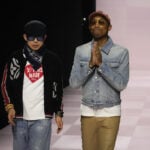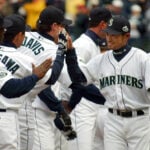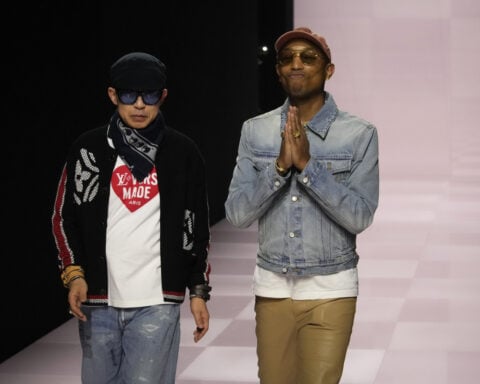The baby tee, a fitted T-shirt style popular in the 1990s and early 2000s, has made a comeback in the fashion industry with a notable shift toward size inclusivity and broader appeal across age groups.
Fashion experts and consumers say the current revival of these fitting, sometimes cropped T-shirts reflects changing attitudes about body acceptance and style accessibility.
"There was a very narrow view of beauty and fashionable body types" during its first era, said Colleen Hill, senior curator of costume and accessories at the Fashion Institute of Technology Museum. Hill noted that the current trend is more inclusive, saying, "I see a lot of embracing of these styles that can look good on anyone. And I do not think they are necessarily limited by age or gender or by body type."
The trend has attracted both longtime fashion enthusiasts and newcomers to the style. Lauren Caruso, a 36-year-old freelance writer and brand consultant in Los Angeles, discovered her first adult-era baby tee at a thrift store. She was initially unaware it was a children's size until noticing the label.
"Most baby tees hit me just near my belly button, which gives me more flexibility to wear it with something high-waisted," said Caruso, who describes herself as five feet two inches tall.
The revival has gained attention on social media, with actress Jemima Kirke, 39, sharing her preference for children's brand Mini Rodini on Instagram. In her post, Kirke demonstrated wearing a size intended for ages 9-11 years.
For some, the trend's return has prompted reflection on past fashion norms. Katie Sturino, body acceptance advocate and founder of body care brand Megababe in New York City, recalled the limitations of the previous baby tee era.
"My friends would buy kids' clothes and wear them," said Sturino, 43. "I could never do that."
Fashion industry professionals have advocated for this style. Mecca James-Williams, 31, a stylist and editor of culture and commerce platform Jam who divides her time between Manhattan and Jamaica, sources her baby tees from vintage stores, eBay, and brands like Meji Meji and Uniqlo.

Younger consumers have also embraced the trend. Meaghan Elliott, 22, a graphic design graduate in Philadelphia, incorporates children's T-shirts into her wardrobe, including a woodblock print shirt featuring the Flying Horse Carousel.
The versatility of the baby tee has contributed to its renewed popularity. Hill explained that the garment can transition from casual to formal settings when paired appropriately. The style is also a layering piece worn under sweaters or with slip dresses for a retro aesthetic during colder weather.
Some wearers have rejected traditional fashion rules about age-appropriate dressing. Tabitha St. Bernard-Jacobs, 43, a writer and Women's March organizer in northern New Jersey, dismissed the notion that trends should not be revisited.
"I heard that if you have done the trend once in your lifetime, then if it comes back again, it is not for you," said St. Bernard-Jacobs. "And I have completely disregarded that rule."
The current iteration of the baby tee trend appears alongside other revivals from the 1990s and Y2K fashion periods. However, industry observers note that contemporary interpretations of these styles often emphasize inclusivity and individual choice rather than conformity to specific body standards.
"You can go back to a trend," Sturino said, "without bringing in the old toxic behavior."
Cropped T-shirts have become popular among celebrities, including Kendall Jenner, Hailey Bieber, and Bella Hadid. The current market, however, offers options beyond children's sizes, accommodating a broader range of body types and style preferences.
Related Article: Look of the Week: Ashley Graham’s shirt skirt and the return of DIY fashion

 Estimated 24.6 million TV viewers watched inauguration coverage, smallest audience since 2013
Estimated 24.6 million TV viewers watched inauguration coverage, smallest audience since 2013
 Mother on trial in West Virginia denies locking adopted teens in shed
Mother on trial in West Virginia denies locking adopted teens in shed
 Extreme cold and snow across the South isn't a threat to most native plants and animals, experts say
Extreme cold and snow across the South isn't a threat to most native plants and animals, experts say
 Star-filled Louis Vuitton show unveils East-meets-West streetwear in collaboration with Kenzo
Star-filled Louis Vuitton show unveils East-meets-West streetwear in collaboration with Kenzo
 Trump order leaves Cuba prisoner deal in limbo
Trump order leaves Cuba prisoner deal in limbo
 Ichiro Suzuki headlines 2025 Baseball Hall of Fame class, receiving 99.7% of the vote
Ichiro Suzuki headlines 2025 Baseball Hall of Fame class, receiving 99.7% of the vote
 The facts about Trump's Stargate AI announcement
The facts about Trump's Stargate AI announcement
 Trump says he is open to Musk buying TikTok if Tesla CEO wants to do so
Trump says he is open to Musk buying TikTok if Tesla CEO wants to do so
 Chicago Bears hire offensive guru Ben Johnson as head coach
Chicago Bears hire offensive guru Ben Johnson as head coach
 Getty Images
Getty Images







